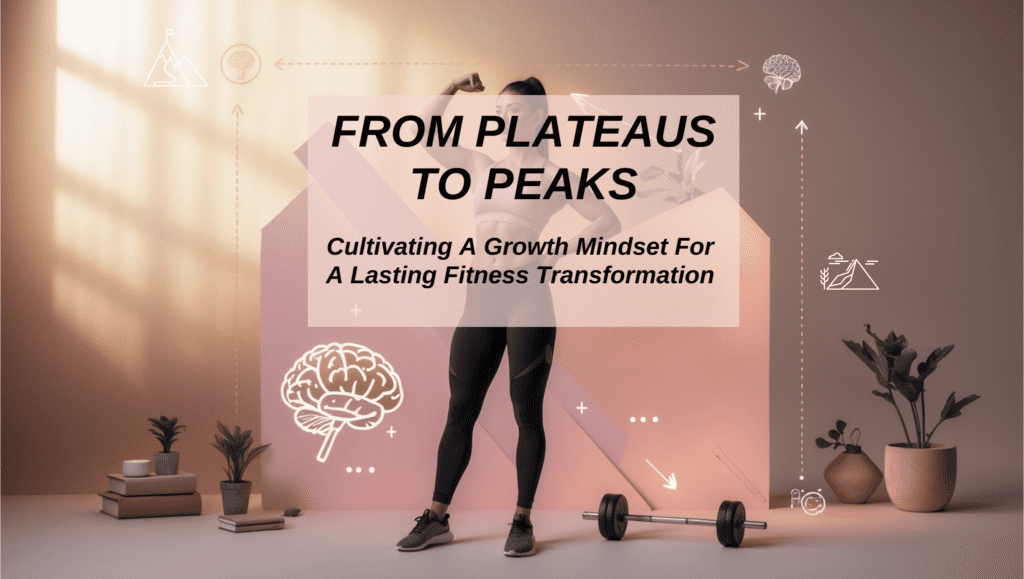
Table of Contents
Have you ever felt stuck in your fitness journey, watching your progress come to a frustrating halt despite your best efforts? I’ve been there too, hitting wall after wall until I discovered the missing piece wasn’t in my workout routine or nutrition plan—it was in my mindset.
The way we think about our fitness journey can be the difference between temporary results and lasting transformation! When I shifted from a fixed mindset of limitations to a growth mindset of possibilities, everything changed not just for me, but for many of clients I’ve worked with since.
The concept of a growth mindset—believing that your abilities can be developed through dedication and hard work—has revolutionized how I approach fitness and how I coach others. Rather than seeing challenges as evidence of our limitations, we can view them as opportunities to grow stronger, both mentally and physically.
This perspective shift doesn’t just make the journey more enjoyable; it makes sustainable results finally possible for those who’ve struggled for years to maintain their progress.
This post may contain affiliate links. I only recommend products and services I genuinely believe in. Additionally, some images on this website may have been created with the help of AI to convey the feeling I wish to share with the reader.
What You Might Need
- A journal dedicated to tracking both physical and mental progress
- A supportive community or accountability partner
- Access to educational resources about fitness and mindset
- Patience and self-compassion
- Willingness to embrace discomfort and challenges
1. Understanding Growth Mindset in Fitness
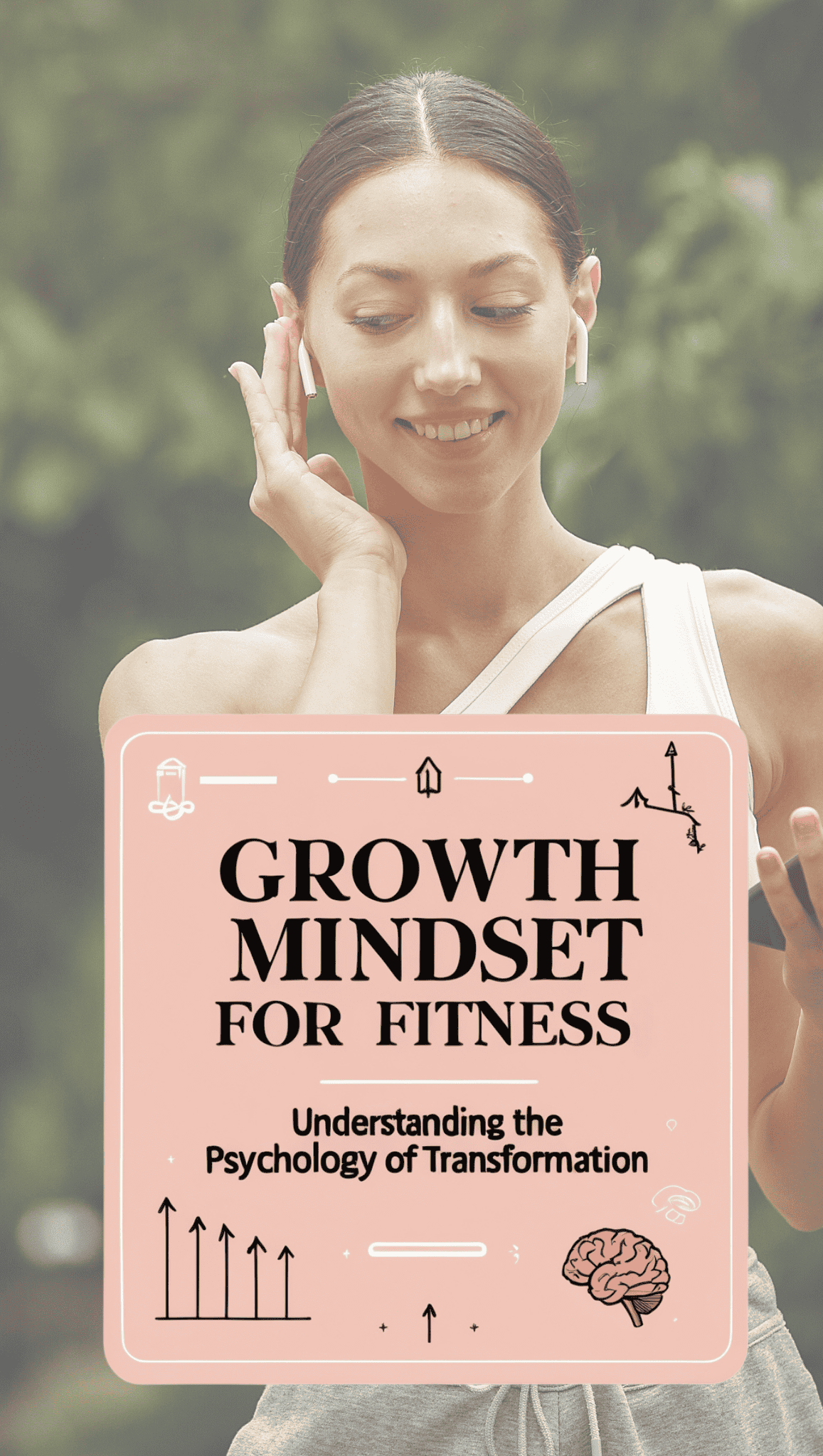
The turning point in my fitness journey wasn’t finding the perfect workout program—it was discovering the profound difference between a fixed and growth mindset. For years, I approached fitness with the belief that my abilities were largely set in stone, feeling devastated when progress slowed or when I couldn’t perform at the level I thought I “should” be at.
This fixed perspective created a relationship with fitness built on frustration and comparison rather than progress and joy. Everything changed when I encountered Dr. Carol Dweck’s research on mindset psychology and realized I had been sabotaging my own potential with limiting beliefs.
The science behind this perspective shift is fascinating—studies show that people with growth mindsets produce different brain activity when facing challenges, creating more neural connections and actually learning from mistakes instead of being defined by them. I experienced this firsthand when I stopped saying “I can’t do pull-ups” and started saying “I can’t do pull-ups yet.”
My client Sarah experienced a similar revelation during our work together, having tried and failed at multiple weight loss attempts before we addressed her mindset. Once she stopped defining herself by previous failures and started viewing each workout as developing her capability, not just testing it, the weight that hadn’t budged in years finally began to shift.
The Science of Mindset and Physical Change
The connection between our thoughts and physical results isn’t just motivational talk—neurological research shows that mindset directly impacts hormone regulation, recovery efficiency, and even muscle activation patterns during exercise. When we believe in our capacity to improve, we literally send different signals to our muscles.
Identifying Your Current Fitness Mindset
Most people don’t realize they’re operating from a fixed mindset until they examine their self-talk during challenging moments. Do you find yourself thinking “I’m just not built for this” or “I’ve never been athletic”? These are classic fixed mindset statements that create self-fulfilling limitations.
Bridging the Gap Between Knowledge and Application
Understanding growth mindset conceptually is just the beginning—the real transformation happens when you actively practice recognizing and redirecting fixed mindset thoughts during your most difficult fitness moments. This conscious awareness creates new neural pathways that eventually become automatic.
How to Start Your Mindset Transformation
- Begin by identifying fixed mindset language in your internal dialogue during workouts
- Create growth-oriented alternative statements to replace limiting thoughts
- Practice daily mindset check-ins, especially before challenging workouts
- Track your mindset shifts alongside physical progress
- Celebrate effort and process improvements, not just outcome achievements
Picture This
You’re halfway through a challenging workout, feeling the burn and fatigue setting in. Instead of thinking, “I can’t do this,” you catch yourself and shift to “This is how I get stronger.” You notice your form improving with each rep, your breathing becoming more controlled with practice. This isn’t just about completing today’s workout—it’s about building the mental resilience and growth mindset that will transform your fitness journey for years to come.
2. Recognizing Fixed Mindset Triggers in Your Fitness Journey

The most dangerous fitness saboteurs often hide in plain sight—our own thoughts and reactions when facing challenges. I discovered this truth the hard way, believing for years that my struggles were purely physical when in reality, my mind was creating invisible barriers. Seemingly innocent thoughts like “I’m too old to start strength training” or “I’m just not built for running” were actually fixed mindset statements that guaranteed my failure before I even began. These thoughts weren’t random—they were triggered by specific situations that activated my insecurities.
The comparison trap was my biggest trigger in the early years of my fitness journey, especially when scrolling through fitness content on social media. Each perfectly edited transformation photo made me question my slower progress, each advanced workout video made me feel inadequate for still struggling with basics.
I’ve watched this same pattern affect countless clients, including Mia, who came to me convinced she wasn’t “an athlete type” despite her desire to complete a half marathon. Her fixed mindset had been triggered repeatedly by childhood experiences of being chosen last for sports teams, creating a self-identity that rejected the possibility of athletic achievement regardless of how her body had changed as an adult.
Common Fixed Mindset Statements in Fitness
The language we use shapes our reality, and certain phrases reliably indicate a fixed mindset approach to fitness. Statements like “That’s just my genetics,” “I’ve always been this way,” or “I don’t have the willpower” create mental walls that no workout program can break through alone.
The Social Media Comparison Spiral
Social media can be particularly dangerous for mindset development because it presents curated highlight reels as reality. The artificial compression of others’ fitness journeys into single posts creates unrealistic expectations that trigger fixed mindset reactions when our own progress doesn’t match these edited portrayals.
Emotional Fitness Triggers
Physical discomfort during challenging workouts, scale fluctuations, or clothing that fits differently than expected can all trigger fixed mindset protection mechanisms. Recognizing these emotional triggers is the first step to responding with growth-oriented thinking instead of self-limiting beliefs.
How to Identify Your Fixed Mindset Triggers
- Keep a “trigger journal” noting situations that prompt negative self-talk
- Review workout experiences where you felt like giving up and identify the thoughts present
- Notice when you compare yourself to others and what specific thoughts arise
- Look for patterns in the language you use when describing fitness setbacks
- Ask trusted friends to point out when they hear you using fixed mindset language
Picture This
You’re trying on clothes before heading to the gym and notice they feel tighter than last week. Instead of spiraling into “I’ll never reach my goals” thinking, you recognize this as a fixed mindset trigger. You pause, acknowledge the disappointment, and choose a growth perspective: “Bodies fluctuate, and this temporary setback doesn’t define my journey.” With your growth mindset activated, you head to your workout focused on progress rather than perfection, understanding that each consistent effort contributes to your lasting fitness transformation regardless of today’s starting point.
3. The Neuroscience of Growth Mindset: How Your Brain Changes With Your Beliefs
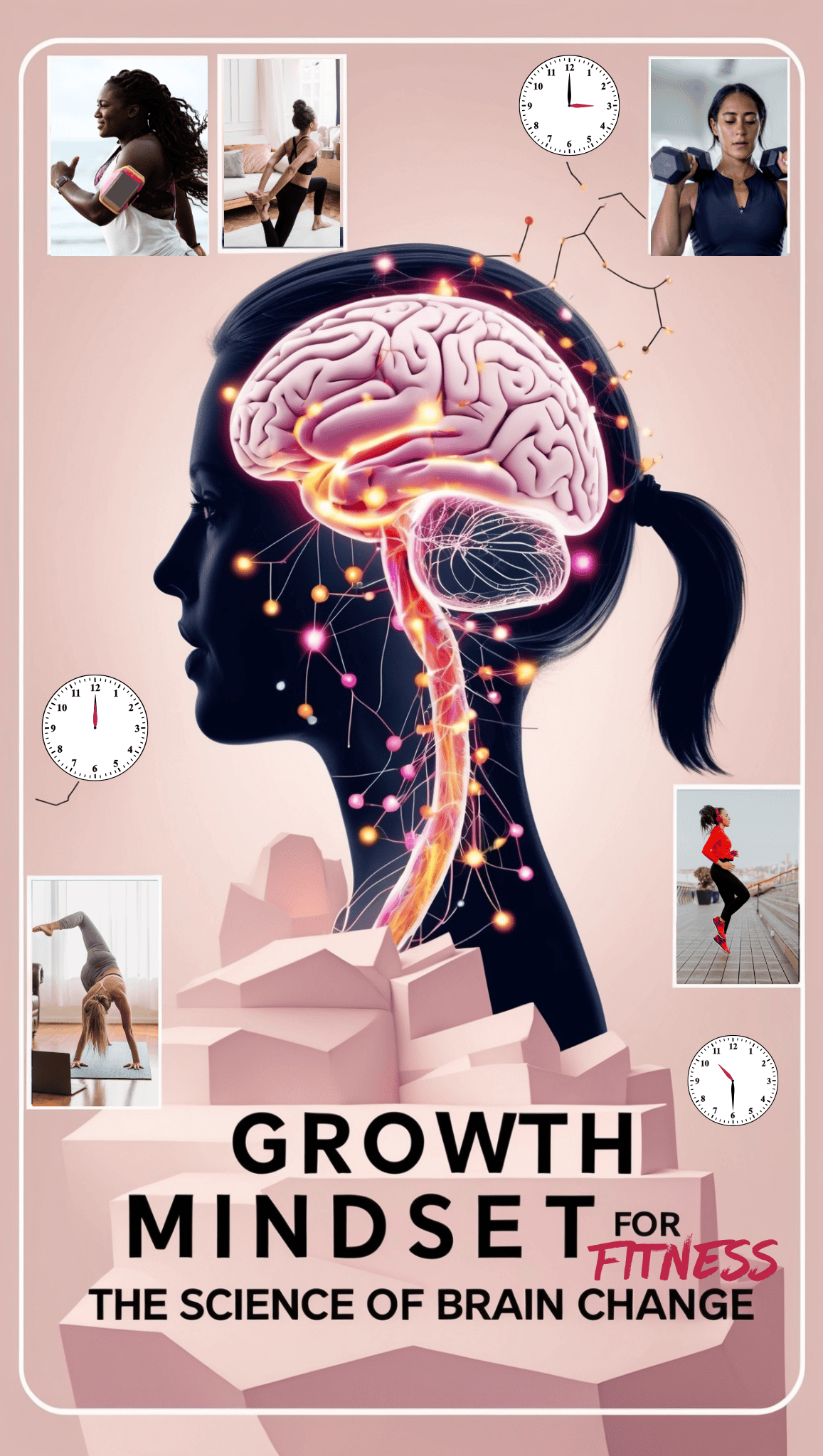
What happens in your brain when you shift from “I can’t” to “I can’t yet” is nothing short of remarkable—and understanding this science was a game-changer for both my fitness journey and my clients’. Neuroplasticity—the brain’s ability to reorganize itself by forming new neural connections—means that our thoughts aren’t just fleeting mental events but actual physical pathways being created.
Each time I practiced redirecting a limiting thought during a challenging workout, I wasn’t just giving myself a motivational pep talk; I was literally rewiring my neural circuitry to support growth instead of limitation. This understanding transformed my approach from hoping for willpower to strategically building brainpower.
The fascinating connection between mindset and hormonal responses completely changed how I view the importance of mental training for physical results. Studies show that people with growth mindsets produce different levels of stress hormones when facing challenges, experiencing more balanced cortisol responses that support recovery instead of undermining it.
My client Jamie exemplified this transformation after struggling with exercise resistance for years. As a high-stress executive, her workouts triggered intense cortisol responses that made exercise feel physically and emotionally draining until we implemented brain-focused approaches that changed her neurological response to physical challenges.
The Neurochemistry of Fitness Motivation
Our brains release different chemical cocktails depending on our perception of activities. Growth mindset practices increase dopamine and endorphin production during exercise, creating positive reinforcement cycles that build intrinsic motivation rather than relying solely on willpower or external rewards.
Building New Neural Fitness Pathways
Strategic mindset practices actively strengthen neural connections that support consistency and resilience. Just as physical training follows progressive overload principles, mental training requires deliberately practicing new thought patterns during increasingly challenging situations to strengthen these pathways.
Leveraging Neuroplasticity for Fitness Adherence
The brain’s adaptability can be strategically harnessed through specific practices that bridge the gap between knowledge and application. Visualization exercises that engage the same neural pathways as physical practice can supplement your training and accelerate mindset development.
How to Train Your Brain for Fitness Success
- Practice 5-minute visualization sessions before workouts, imagining successful completion with growth-oriented thinking
- Implement pattern interruption techniques when fixed mindset thoughts arise during physical challenges
- Use positive affirmations aligned with neuroscience (specific, present-tense statements about your process and effort)
- Create environmental cues that trigger growth mindset states before and during workouts
- Combine physical movement with mindset mantras to strengthen neural associations
Picture This
You’re beginning your workout, taking a moment to close your eyes and activate your growth mindset with intentionality. As you move through each exercise, you notice thoughts arising—some supportive, others limiting—and consciously choose which ones to strengthen through your focus. This isn’t just a physical workout but a brain training session, where each repetition builds not only muscle fibers but neural pathways that support your lasting fitness transformation. The science of neuroplasticity is working in your favor with every growth-oriented thought you choose to reinforce.
4. Embracing Challenges: Transforming Fitness Obstacles into Opportunities

The moment that transformed my fitness journey forever came during a particularly grueling training session when I suddenly realized my entire relationship with difficulty was backward. For years, I’d been avoiding discomfort, seeking the easiest paths, and feeling discouraged when things got tough—not understanding that the challenges themselves were the catalysts for transformation.
The soreness I’d been dreading, the fatigue I’d been avoiding, the plateaus that frustrated me—these weren’t signs of failure but necessary signals that adaptation was possible. This perspective shift changed everything about how I approached workouts, nutrition challenges, and recovery days.
This transformation wasn’t just philosophical but practical in its impact on results. When I started deliberately seeking challenges instead of avoiding them, my progress accelerated beyond what years of comfort-zone training had produced.
The Adaptation Principle in Physical Training
Physical growth occurs precisely at the edge of our capabilities—not within our comfort zone nor beyond our recovery capacity. Understanding this principle transforms how we perceive challenges, helping us recognize that effective training should feel difficult in productive ways.
Reframing Common Fitness Setbacks
Injuries, plateaus, and scheduling challenges can all be approached from either a fixed or growth perspective. The difference isn’t in the circumstance itself but in the meaning we assign to it and the actions that interpretation inspires.
Productive vs. Destructive Discomfort
Not all challenges contribute equally to growth. Learning to distinguish between productive discomfort (which signals adaptation) and destructive discomfort (which signals potential injury) is essential for sustainable progress.
How to Build a Challenge-Seeking Mindset
- Start each week by identifying one fitness comfort zone to purposefully step outside of
- Create a “reframing practice” for moments of difficulty, consciously shifting from “this is hard” to “this is how I grow”
- Keep a challenge journal documenting obstacles faced and lessons learned
- Celebrate efforts in difficult circumstances more than achievements in easy ones
- Develop a setback response plan with specific growth-oriented actions to take when facing injuries or plateaus
Picture This
You’re facing a workout that intimidates you—one with movements that challenge your coordination and weights that test your strength. Instead of avoidance or anxiety, you feel a spark of excitement. This is where growth happens. Each difficult rep is an opportunity to develop not just physical strength but mental resilience. As sweat drips and muscles fatigue, you’re not just enduring a challenging workout; you’re actively rewiring your relationship with difficulty itself, transforming what once would have triggered discouragement into a catalyst for your fitness transformation.
5. The Power of “Yet”: Building Patience in Your Fitness Journey

The three-letter word that revolutionized my approach to fitness didn’t come from a trendy program or supplement—it was simply adding “yet” to the end of my limitations. When “I can’t do a pull-up” became “I can’t do a pull-up yet,” everything shifted from a statement of fixed identity to a temporary circumstance on a journey of growth.
This tiny linguistic change opened the door to possibility where previously I had built walls of limitation. As someone naturally inclined toward impatience, this perspective was initially challenging to embrace—I wanted results yesterday, not through the steady accumulation of consistent effort over time.
Understanding the true timeline of physical transformation was crucial for developing the patience necessary for lasting change. No sustainable body transformation happens in the 30-day windows promised by fitness marketing, yet I would repeatedly judge my progress against these unrealistic benchmarks.
My client Carl exemplified the power of “yet” during our work together, maintaining faith in the process through a six-month weight loss plateau that would have derailed her previous attempts. By focusing on process metrics beyond the scale—consistency, strength gains, energy improvements, and mindset development—she continued her practices until her body finally adapted, ultimately achieving more significant and sustainable results than quick-fix approaches had ever produced.
The Timeline Reality of Different Fitness Goals
Different physical adaptations require vastly different timeframes—strength gains might show up within weeks, while significant body composition changes typically require months of consistent effort. Understanding these biological timelines prevents the discouragement that leads to premature abandonment.
Process-Oriented vs. Outcome-Focused Goals
The shift from “I want to lose 20 pounds” to “I will follow my nutrition plan consistently for 90 days” represents more than semantic difference—it transitions control from outcomes that can fluctuate for many reasons to processes entirely within our power to maintain.
Creating Meaningful Metrics Beyond the Scale
Scale weight, clothing size, and visual changes are lagging indicators that fluctuate and often fail to reflect true progress. Leading indicators like workout consistency, nutritional adherence, energy levels, and mindset quality provide more useful feedback for sustaining motivation.
How to Develop Fitness Patience
- Create a “patience practice” through meditation or mindfulness specifically focused on fitness journey acceptance
- Establish process goals for 30, 60, and 90-day periods alongside long-term outcome goals
- Track at least five progress indicators beyond the scale to provide evidence of change during apparent plateaus
- Implement a 24-hour rule for discouragement: wait a full day before making any decisions about your fitness approach when feeling frustrated
- Develop milestone celebrations that acknowledge consistency milestones regardless of outcome achievement
Picture This
You step on the scale after weeks of consistent effort and see a number that hasn’t changed. Instead of deflation or program-hopping, you think “I haven’t reached my goal weight yet” and turn to your process metrics for guidance. Your workout consistency has been excellent, your nutrition adherence strong, your energy levels improving, and your strength increasing. With your growth mindset firmly in place, you recognize this plateau not as failure but as part of the journey toward your lasting transformation. Patience isn’t passive waiting but active perseverance through predictable challenges on the path to your fitness success.
6. Effort as the Path to Mastery: Shifting Your Focus from Talent to Work

One of the most liberating realizations in my fitness journey came when I finally understood that the “naturally fit” people I envied weren’t benefiting from superior genetics as much as consistent, intelligent effort applied over time.
In the early years of my fitness journey, I had used my perceived lack of natural athletic ability as an excuse for inconsistency, not recognizing how this fixed mindset belief was creating a self-fulfilling prophecy.
The science increasingly shows that while genetic factors certainly influence aspects of fitness, they are far less deterministic than once believed—and the variables most predictive of success are behavioral and psychological, not genetic.
The Myth of Fitness “Naturals”
Behind every seemingly “gifted” athlete is typically thousands of hours of deliberate practice, often beginning in childhood. This invisible work creates the illusion of natural talent when what we’re actually observing is the compound effect of consistent effort.
Effort Quality vs. Effort Quantity
Not all effort contributes equally to mastery. Deliberate practice—focused work on specific aspects of performance with immediate feedback—accelerates growth far more effectively than merely accumulating workout hours without strategic intention.
Systems That Support Consistent Effort
Willpower is a finite resource, but systems create sustainable behavior. Designing your environment, schedule, and social connections to make consistent effort the path of least resistance is more effective than relying on motivation.
How to Develop an Effort-Focused Approach
- Identify and eliminate “talent language” from your fitness vocabulary, replacing it with effort-based assessments
- Create a deliberate practice plan that targets specific aspects of fitness with measurable feedback
- Implement environmental design strategies that reduce the friction between intention and action
- Develop a “minimum effective effort” protocol for days when motivation is low
- Track effort consistency as your primary metric, celebrating streaks and quick returns after interruptions
Picture This
You’re at the gym watching someone perform an impressive lift or movement, and instead of thinking “they’re naturally strong,” you see the invisible mountain of consistent effort behind their current ability. This perspective shift changes how you view your own journey—each workout becomes a deposit in your skill development account rather than a test of fixed abilities. With your growth mindset fully activated, you approach today’s training not as a demonstration of what you can already do but as deliberate practice that expands what you’ll be capable of tomorrow. The focus on quality effort rather than innate talent has transformed fitness from a revealing of fixed limitations into a pathway for continuous growth.
7. Learning from Criticism and Feedback: Using Data to Drive Your Fitness Evolution

The breakthrough that accelerated my fitness journey more than any specific program came when I stopped taking feedback personally and started viewing it as valuable data. For years, I’d react defensively to any suggestion that my form needed correction or my approach wasn’t optimal—my ego interpreted this information as criticism of my worth rather than opportunities for improvement.
Everything changed when I worked with a coach who challenged me to separate my identity from my performance, helping me recognize that feedback is simply information that can either be used for growth or rejected to preserve comfort.
This mindset shift transformed my relationship with objective measurements that previously triggered shame or avoidance. Instead of seeing a heart rate monitor, fitness tracker, or performance metric as judgments of my worth, I began viewing them as neutral data sources offering insights to refine my approach.
Once I reframed measurement as information rather than evaluation, I used performance data to identify patterns, make strategic adjustments, and ultimately transform my training effectiveness.
Separating Identity from Performance
The growth mindset allows us to receive feedback about our performance without experiencing it as commentary on our worth or potential. This separation creates the psychological safety necessary to seek out and utilize constructive criticism.
Creating Personal Feedback Loops
Effective improvement requires regular, objective feedback about the impact of our efforts. Designing personal feedback systems through journaling, tracking, testing, and regular assessments accelerates progress by tightening the learning cycle.
Technology as Objective Fitness Coach
Modern fitness technology provides unprecedented access to personalized data that previous generations of exercisers could only estimate. Heart rate variability, recovery metrics, and performance tracking offer insights that can significantly enhance training effectiveness when viewed through a growth mindset lens.
How to Create a Feedback-Rich Fitness Environment
- Implement a weekly self-assessment ritual that objectively reviews what worked and what needs adjustment
- Choose 3-5 key metrics that provide meaningful feedback for your specific goals
- Develop a “feedback processing” methodology that separates emotional reactions from actionable insights
- Create relationships with coaches or training partners who provide honest, constructive observations
- Schedule regular performance tests or assessments that measure progress in objective terms
Picture This
You’re completing your workout, checking the data from your fitness tracker, and noticing that your heart rate recovery is slower than usual. Rather than feeling discouraged or ignoring the information, you view it as valuable feedback about your current recovery status. This insight prompts you to examine your recent sleep patterns and stress levels, making adjustments to your next training session accordingly. Each data point, each piece of feedback, each performance metric serves not as judgment but as a compass guiding your fitness journey toward more effective choices. This growth-oriented approach to feedback has transformed criticism from something to avoid into a powerful catalyst for your continuous improvement.
8. Success of Others: Finding Inspiration Without Comparison
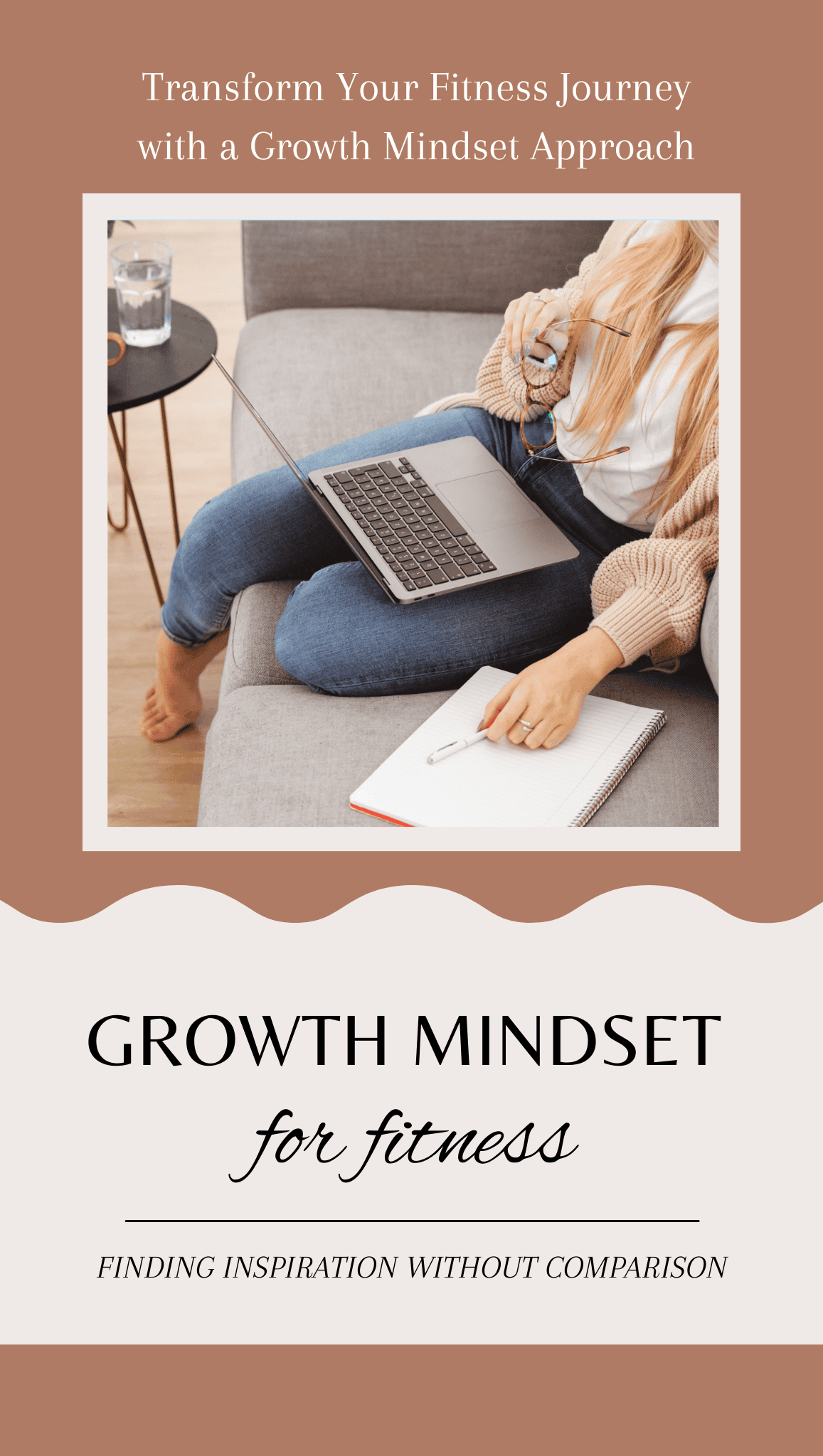
One of the most toxic mindset patterns that sabotaged my early fitness journey was what I now call “compare and despair”—using others’ success not as proof of what’s possible but as evidence of my own inadequacy. I would scroll through transformation stories feeling increasingly hopeless, wondering why others could achieve what seemed impossible for me.
The critical turning point came when I recognized that every success story contained valuable strategic information if I could separate the inspiration from the comparison. Instead of thinking “Why not me?” I learned to ask “What can I learn from them?”
This perspective shift revealed that success stories aren’t just motivational but educational—containing clues about effective approaches, common challenges, and strategic solutions. My jealousy transformed into genuine curiosity and appreciation for others’ journeys.
My client May experienced a similar transformation when we worked together, initially avoiding fitness communities because they triggered intense comparison and discouragement. By helping her develop a growth-oriented approach to others’ success, she eventually built a supportive community that became instrumental in her own transformation, celebrating others’ victories as expanding what she knew was possible for herself.
Study Success Patterns, Not Outcomes
When we focus exclusively on others’ results, we miss the valuable information about the processes, mindsets, and strategies that produced those outcomes. A growth mindset approach seeks to understand the journey, not just admire the destination.
The Community Multiplier Effect
Research consistently shows that supportive social connections significantly increase fitness adherence and results. Growth-minded fitness communities amplify individual potential through shared learning, accountability, and normalized effort.
Finding Aligned Role Models
Not all successful fitness journeys provide equally relevant inspiration. Seeking role models with similar starting points, challenges, or life circumstances provides more applicable insights than comparing yourself to those with vastly different contexts.
How to Build Healthy Inspiration Practices
- Create a “success study” journal where you analyze 2-3 inspiring stories each month for applicable strategies
- Develop a mental filter that separates useful information from comparison triggers when viewing others’ content
- Build relationships with people slightly ahead of you on similar journeys who can provide relevant guidance
- Practice genuine celebration of others’ achievements, recognizing that success isn’t a limited resource
- Use visualization to internalize inspiration, imagining yourself implementing the strategies you learn from others
Picture This
You’re scrolling through social media and see someone celebrating a fitness achievement you haven’t reached yet. Instead of the familiar twinge of inadequacy, you feel a spark of curiosity and inspiration. You notice the consistency they’ve maintained, the mindset shifts they’ve described, and the specific strategies they’ve implemented. Their success doesn’t diminish your journey but enriches it by expanding your understanding of what’s possible with sustained effort and the right approach. This growth mindset perspective has transformed your relationship with others’ achievements from a source of discouragement into a valuable resource for your own fitness transformation.
9. Practical Strategies: My Daily Growth Mindset Practices for Fitness Success
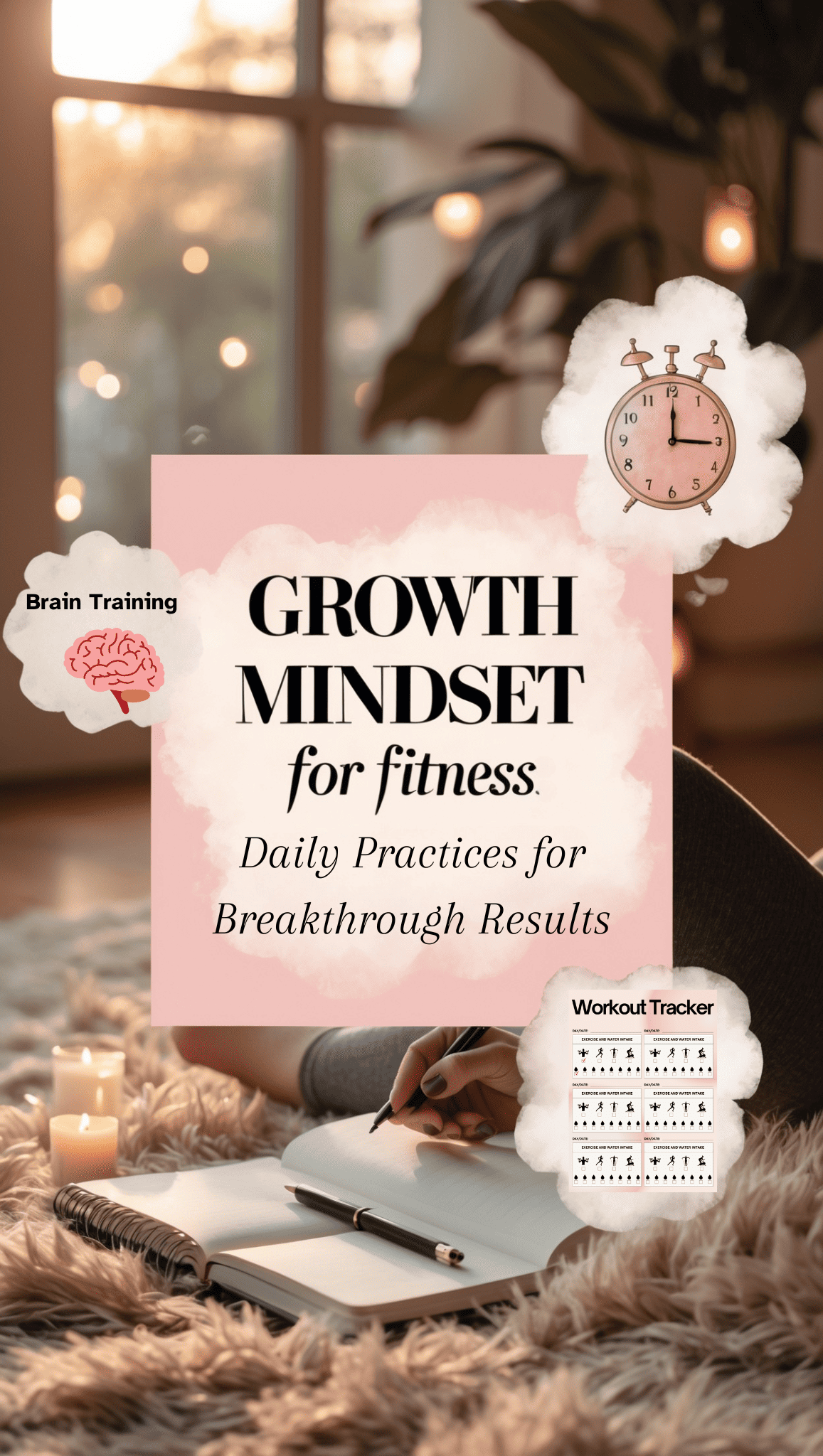
The transformation of my fitness journey didn’t happen through occasional inspiration but through daily, intentional mindset practices that gradually rewired my approach. The most powerful change came from implementing a morning mindset ritual that sets the psychological foundation before my body even begins to move. Before checking email or social media, I spend five minutes journaling making sure to take note of my fitness journey—acknowledging challenges, celebrating efforts, and setting intentions for the day ahead. This simple practice prevents my mindset from being hijacked by external influences before I’ve established my internal direction.
The consistent application of specific language patterns has been equally transformational in maintaining a growth perspective through challenges. Simply replacing phrases like “I have to workout” with “I get to workout” shifts the entire emotional context from obligation to opportunity.
By establishing a pre-workout mindset ritual and incorporating visualization techniques to mentally rehearse success, you can cultivate psychological tools that transform your relationship with fitness routines, especially those that have previously triggered overwhelming self-consciousness.
Morning Mindset Rituals
How we begin our day establishes our mental framework for the choices that follow. Creating a brief but consistent morning practice that reinforces growth mindset principles provides psychological momentum that carries through daily fitness decisions.
Growth-Oriented Language Patterns
The words we use—both in self-talk and communication with others—shape our perception and experience. Deliberately practicing growth-oriented language creates cognitive pathways that support consistent action even when motivation fluctuates.
Visualization as Mental Rehearsal
Athletes have long used visualization techniques to enhance performance, but these practices are equally powerful for everyday fitness adherence. Mentally rehearsing both the physical execution and psychological approach to challenges prepares the brain for successful engagement.
How to Implement Daily Mindset Practices
- Create a 5-minute morning mindset ritual combining journaling, affirmations, and intention-setting
- Develop a personal list of language substitutions that transform fixed statements into growth-oriented alternatives
- Implement a pre-workout visualization routine that mentally rehearses both execution and psychological response
- Practice “mindset resets” throughout the day when you notice fixed thinking patterns emerging
- End each day with a brief reflection identifying one growth-oriented choice you made and its impact
Picture This
You wake up feeling the familiar resistance to your morning workout, but instead of letting this feeling dictate your choice, you open your mindset journal. Taking five minutes to reconnect with your growth perspective, you write about the opportunity today’s challenge presents for development. You visualize yourself moving through the workout with focus and determination, imagining how you’ll respond to difficulty with patience and persistence. By the time you lace up your shoes, your mind is already aligned with growth, transforming what might have been another skipped session into a meaningful step forward in your fitness journey. These daily mindset practices aren’t just psychological exercises—they’re the foundation upon which lasting physical transformation is built.
10. Measuring Mindset Progress: Tracking Your Psychological Fitness Alongside Physical Gains
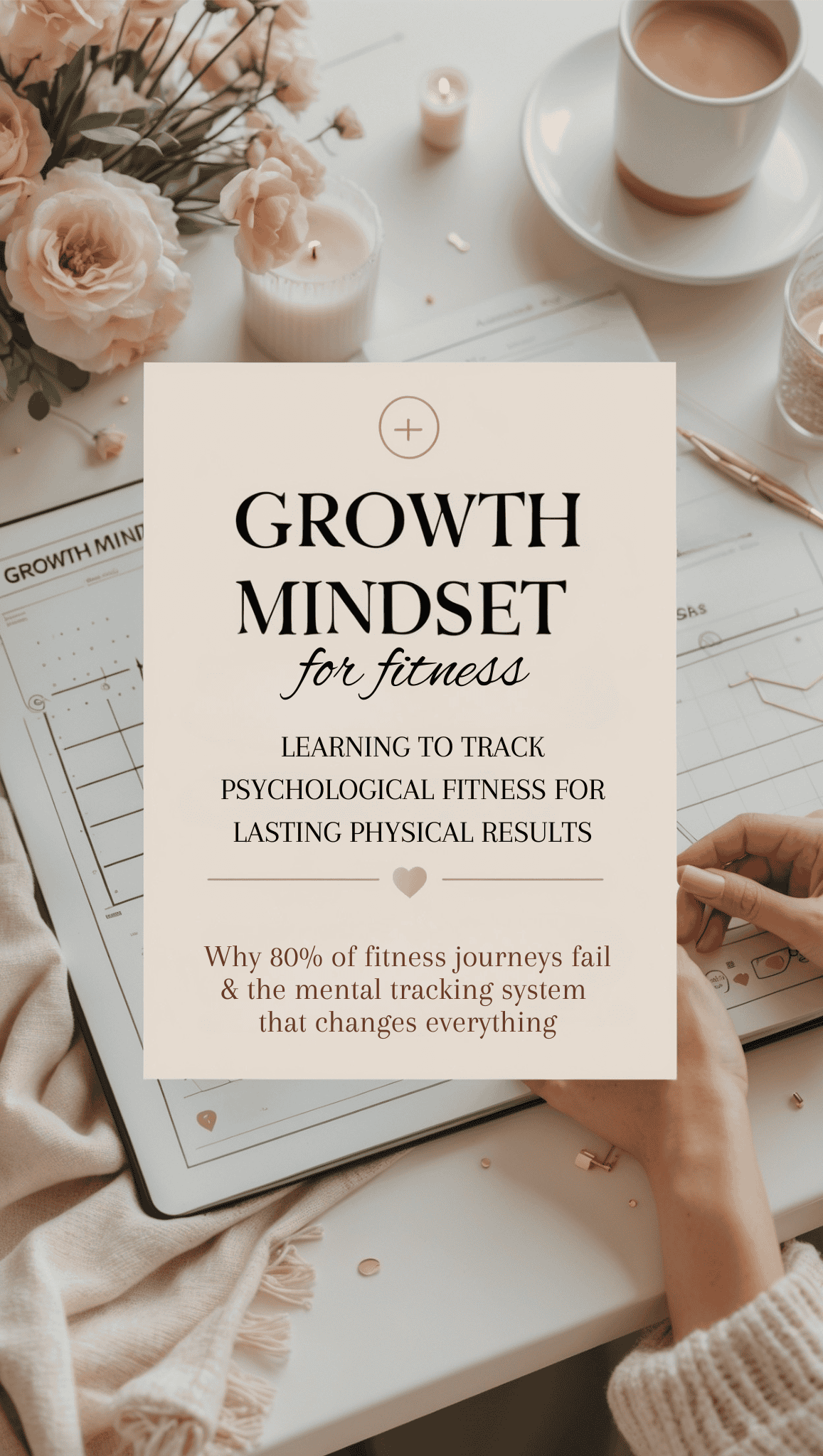
The most overlooked yet transformative aspect of my fitness journey was developing a system to track my mindset progress with the same attention I gave to physical metrics. While I diligently recorded weights lifted and measurements taken, I initially failed to document the equally important psychological adaptations occurring.
This changed when I created a mindset tracking system that quantified my growth-oriented responses to challenges, my consistency in self-talk, and my resilience following setbacks. This practice revealed patterns I would have otherwise missed—showing me that certain situations reliably triggered fixed mindset responses and that psychological progress often preceded physical breakthroughs.
The integration of psychological and physical tracking created a more comprehensive understanding of my overall fitness development. I could see how improvements in my mindset directly correlated with enhanced performance and consistency, even when physical markers temporarily plateaued.
My client Taylor experienced the most dramatic demonstration of this principle—after years of yo-yo dieting and program-hopping, implementing mindset tracking became the key that finally unlocked long-term consistency.
By celebrating psychological wins like maintaining perspective during challenging weeks, responding constructively to setbacks, and choosing growth-oriented language, she developed the mental foundation that supported sustainable physical transformation.
Quantifying the Qualitative
While mindset may seem inherently subjective, specific aspects can be quantified through tracking frequency of growth responses, resilience recovery time after setbacks, and consistency of growth-oriented language and behaviors.
Leading Indicators of Physical Change
Mindset metrics often function as leading indicators that predict subsequent physical transformations. Changes in how we think and respond psychologically typically precede visible changes in performance and physique.
Creating Psychological Success Momentum
Celebrating mindset wins creates positive reinforcement cycles that support continued growth. Acknowledging improvements in perspective, language, and emotional responses builds momentum that carries through physical challenges.
How to Track Your Mindset Progress
- Create a weekly mindset assessment tracking specific growth-oriented behaviors and thoughts
- Implement a 1-10 scale rating your response to challenges, with clear criteria for each number
- Use a habit tracking app to monitor daily mindset practices alongside physical training
- Document “perspective shifts” when you successfully transform fixed reactions into growth responses
- Schedule monthly mindset reviews identifying patterns, progress, and areas for continued development
Picture This
You’re reviewing your fitness journal, noticing that alongside strength gains and nutritional consistency, you’ve documented significant mindset progress. Six months ago, a missed workout would trigger a cascade of negative self-talk and often lead to skipping the entire week. Now, you record how a similar situation this week prompted a growth response—you recognized the circumstances as temporary, maintained perspective, and returned to your routine immediately without the previously automatic spiral. This psychological resilience wasn’t luck or coincidence but the result of deliberately practicing and tracking your mindset development. As you continue your fitness journey, this integrated approach—measuring both mental and physical progress—provides the comprehensive foundation for truly lasting transformation.
Want to Simplify Your Wellness Journey?
As you’ve learned throughout this article, developing a growth mindset is a powerful catalyst for fitness transformation, but it’s just one piece of a successful and sustainable wellness journey. Creating lasting results requires a personalized approach that integrates your mindset practices with proper nutrition, recovery strategies, progression planning, and consistency—all tailored to your unique body and lifestyle.

Ready for a Customized Approach to Your Wellness Journey?
My Wellness Lifestyle Strong Foundation Audit helps you apply the growth principles you’ve just learned while cutting through the confusion to create a comprehensive strategy that works specifically for you. During this 90-minute audit session, we’ll assess your current mindset and habits, identify your unique needs, and develop a practical plan that integrates growth mindset practices alongside other evidence-based approaches for sustainable transformation.
You’ll receive a personalized blueprint that addresses not just your mental approach, but all the critical elements that support your success—from nutrition timing to progress tracking methods that honor both psychological and physical progress. Skip the frustrating cycle of trial and error and start your journey with clarity and confidence. Book your Wellness Lifestyle Strong Foundation Audit today and transform your approach to lasting wellness!
Personalized Wellness Plan Development

Final Thoughts
The journey from a fixed to a growth mindset in fitness isn’t a single moment of transformation but a continuous practice of choosing possibility over limitation. Throughout this article, we’ve explored how our beliefs about our potential directly impact the results we achieve—not through mystical thinking but through concrete neurological, psychological, and behavioral pathways. The science is clear: how we think about our fitness journey shapes everything from our hormone regulation to our consistency to our ultimate results.
What makes a growth mindset so powerful is that it’s available to everyone, regardless of starting point, genetics, or circumstances. You don’t need special equipment, expensive supplements, or even exceptional willpower—you need a willingness to challenge your assumptions about your capabilities and embrace the process of development through consistent effort.
The journey isn’t always comfortable. In fact, the moments that trigger fixed mindset reactions—plateaus, setbacks, comparing yourself to others—are precisely the opportunities to practice the growth perspective that leads to breakthroughs. Each time you catch a limiting thought and redirect it toward possibility, you’re not just affecting today’s workout but rewiring your approach to challenges across your entire life.
I encourage you to begin implementing these strategies today. Start small—perhaps with the morning mindset ritual or tracking one aspect of your psychological approach alongside physical metrics. With each deliberate practice, you strengthen the neural pathways that support lasting transformation, building not just a different body but a different relationship with challenge and possibility. Your fitness journey becomes not just about changing how you look but transforming how you think—and that is the true foundation of lasting results.

This post may contain affiliate links. I only recommend products and services I genuinely believe in. Additionally, some images on this website may have been created with the help of AI to convey the feeling I wish to share with the reader.
FREQUENTLY ASKED QUESTIONS
How long does it take to develop a growth mindset for fitness?
Developing a growth mindset isn’t an overnight transformation but rather a progressive skill development that typically shows noticeable improvement within 4-8 weeks of consistent practice. Most people report experiencing significant shifts in their approach to fitness challenges within the first month of implementing daily mindset practices. Remember that like any skill, mindset development continues indefinitely as you encounter new situations that challenge your perspective.
Can I have a growth mindset about some aspects of fitness but a fixed mindset about others?
Absolutely! Most people naturally maintain growth mindsets in areas where they’ve experienced success while holding fixed mindsets in domains of previous struggle. You might have a growth perspective about strength training but a fixed mindset about flexibility or cardiovascular endurance. The key is recognizing these domain-specific mindsets and deliberately applying growth-oriented thinking to the areas where you currently maintain limiting beliefs.
What’s the difference between positive thinking and a growth mindset?
While both approaches can be valuable, they differ significantly in their focus and application. Positive thinking emphasizes optimistic perspectives regardless of circumstance, while growth mindset specifically focuses on the belief that abilities can be developed through dedicated effort and effective strategies. Growth mindset doesn’t require feeling positive about challenges—rather, it’s about maintaining belief in your capacity to improve through the difficulty, even when the experience itself isn’t pleasant or easy.
How do I maintain a growth mindset when I’m not seeing physical results?
This scenario perfectly highlights the value of tracking mindset alongside physical metrics. During periods when physical progress seems stalled, focus on improvements in your psychological approach—enhanced consistency, more constructive responses to challenges, or faster recovery from setbacks. Review the science of physical adaptation to remind yourself that visible results often lag behind behavioral change. Finally, examine whether the metrics you’re tracking actually align with your efforts; sometimes we’re making progress in areas we’re not measuring.
Can changing my mindset really affect my physical results, or is that just motivation talk?
The connection between mindset and physical results extends far beyond motivation. Research in psychoneuroimmunology demonstrates that our thought patterns directly influence hormone regulation, immune function, and even gene expression. Studies show that growth mindset interventions affect everything from stress hormone levels to cardiac rehabilitation outcomes to athletic performance. While the mechanisms are complex, the evidence is clear—psychological approaches significantly impact physiological responses and physical outcomes.
About The Author
Jahlila is a Transformational Whole Self and Wellness Lifestyle Empowerment Coach, a devoted mother, passionate writer, and a fervent advocate for holistic wellness. She is the creator of The Tri-Sync Method, a comprehensive coaching program designed to help women establish a personalized wellness and self-care lifestyle for enduring total health wellness.
Her journey has transitioned from focusing solely on health and fitness to embracing a broader mission: empowering women through holistic approaches that unite body, mind, and spirit. Jahlila is dedicated to teaching, coaching, writing, and speaking about how wellness intersects with a joyful, balanced life. Her mission is to motivate women to prioritize and achieve their wellness goals, fostering a deep connection between a vibrant lifestyle and true happiness. Ready to reclaim your vitality, achieve mental clarity, and embrace your wellness journey? Explore more at The Tri-Sync Method.Com
Don’t wait another day to start living your healthiest, happiest life. Schedule a Free Discovery Consultation with Jahlila today to explore how The Tri-Sync Method can transform your life. For additional questions or personalized guidance, please visit our Contact Page.




Leave a Reply